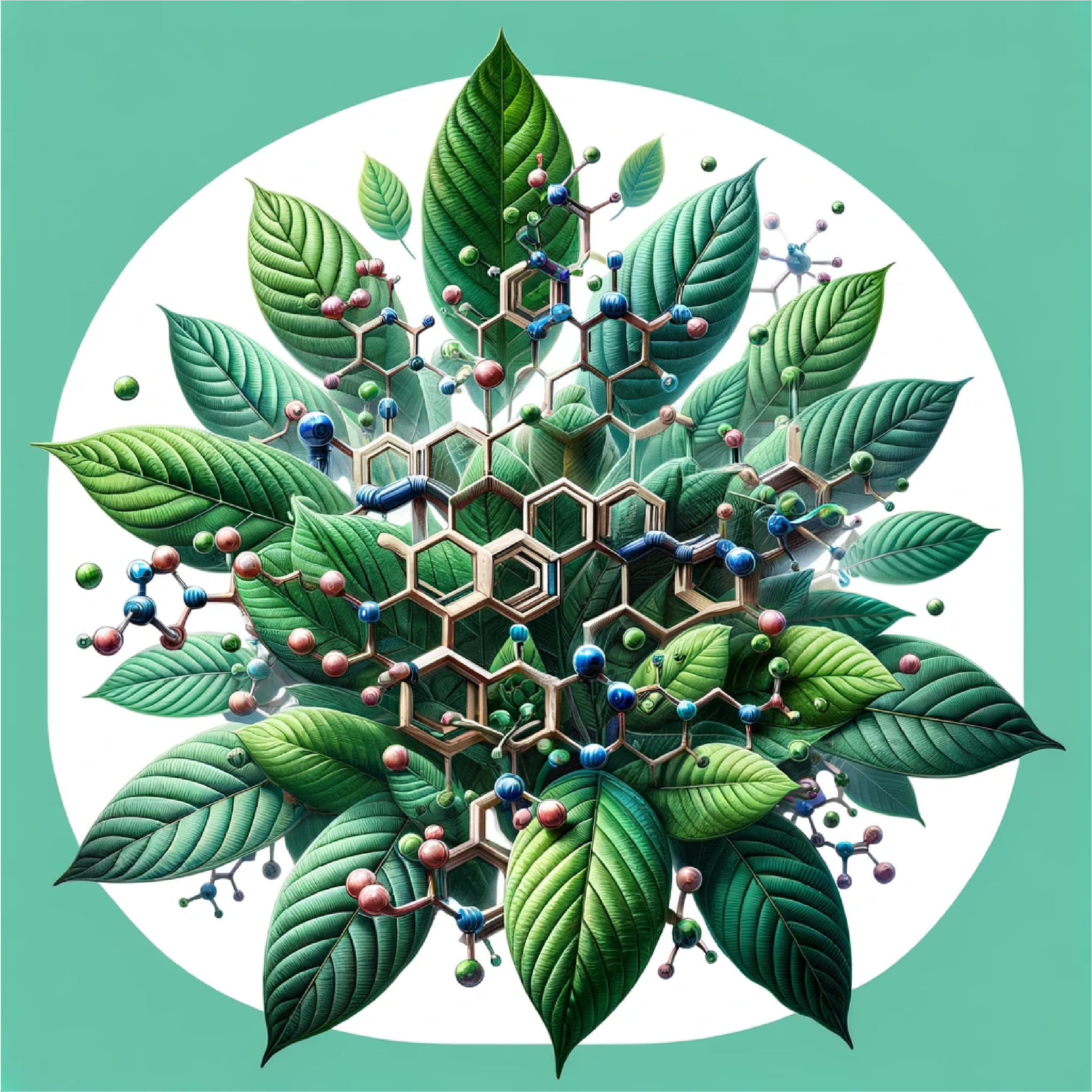What gives kratom its unique effects? That’s easy: alkaloids.
How do these alkaloids actually work? That’s a bit more complicated. But thankfully, researchers have provided answers.
Organic compounds called alkaloids are abundant throughout nature, including within the Mitragyna speciosa plant known as kratom. Alkaloids are bioactive, enabling them to interact with our body systems to produce physiological effects.
Kratom’s alkaloids are known for a range of dose-dependent effects, including:
- Low to moderate doses (1-5g): Mild stimulant effects that prevent fatigue.
- Moderate to high doses (5-15g): Euphoric effects that help with pain management, diarrhea, and opioid withdrawal symptoms.
- Very high doses (>15g): Extremely sedative effects that can mimic opioids and induce stupor.
Kratom’s Major Alkaloids
Mitragynine and 7-hydroxymitragynine are the primary alkaloids associated with kratom. They constitute roughly 66% and 2% of the total alkaloid content, respectively.
Despite its lower quantity, 7-hydroxymitragynine demonstrates a potency that surpasses mitragynine. It is believed to have better oral bioavailability and blood-brain barrier penetration than mitragynine, making it an extremely effective alkaloid for analgesic (pain-relieving) effects.
Other alkaloids like speciogynine, paynantheine, and speciociliatine are also present but in lesser quantities. More research is needed to learn about their pharmacology and to determine the extent to which they contribute to kratom’s effects.
But for now, the focus has remained on kratom’s star alkaloids, mitragynine and 7-hydroxymitragynine.
How Kratom Works
To understand kratom’s mechanism of action, we must first understand the opioid system. This consists of a network of proteins, referred to as opioid receptors, spread through our central and peripheral nervous systems. These receptors process our body’s natural endorphins and external substances such as prescribed opioids, aiding in pain management and other functions. When opioids bind to them, they act like a key unlocking the receptor’s ability to reduce pain perception.
The alkaloids mitragynine and 7-hydroxymitragynine also bind to and activate these opioid receptors, notably the mu-opioid receptor. This results in a variety of effects, including reduced feelings of pain and increased production of dopamine, a neurotransmitter critical in regulating mood and emotional responses.
Mu-opioid receptors are directly linked to analgesic effects and are primary targets of most opioids, especially the most powerful opioids like morphine, heroin, and fentanyl. Activation of mu receptors can lead to pain relief, sedation, and euphoria. Unfortunately, they are also connected to unfavorable effects such as respiratory depression and addiction, which are common in opioid drug misuse. However, kratom is known to induce less respiratory depression than classical opioid agonists.
While kratom is not an opioid, its effects at high doses are often referred to as opioid-like. But kratom’s alkaloids are classified as partial agonists, whereas the opioids used in mainstream medicine are full agonists. An agonist is a chemical that activates a receptor and produces a biological response. As their names suggest, full agonists activate receptors to their maximum possible response, while partial agonists only produce a partial response. In other words, partial agonists are weaker than full agonists. So even though kratom does elicit opioid-like responses, they are less intense than those of typical opioids.
But there’s more to kratom’s alkaloids than just interaction with opioid receptors. Kratom also has an affinity to other receptor systems in the brain, like serotonin, dopamine, and adrenergic receptors. This suggests that kratom has potential for treating such emotional and mental conditions as depression, anxiety, and psychosis.
Final Thoughts
The scientific community continues to explore the mechanisms through which kratom’s alkaloids work within the human body. The study of opioid receptors is aimed at improving our treatments of pain, addiction, and perhaps even more. The development of drugs that target opioid receptors more selectively is a promising area of ongoing research.
Kratom has emerged as an extremely unique natural marvel with an impressive range of beneficial properties. The more we learn about its amazing alkaloids, the closer we get to unleashing its true potential.
Millions of people have already helped change their lives for the better thanks to the magic of these alkaloids. Millions more are sure to come.






